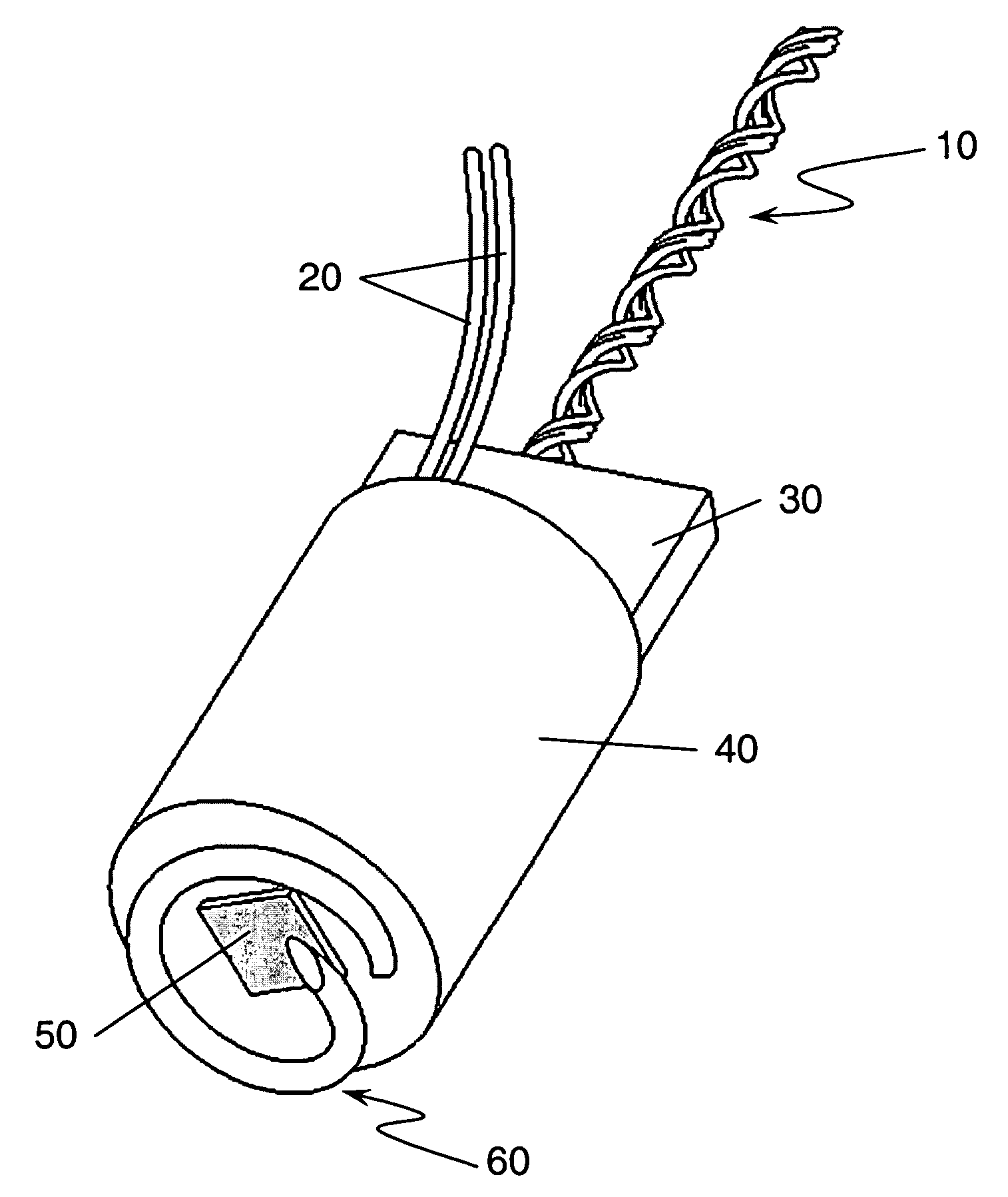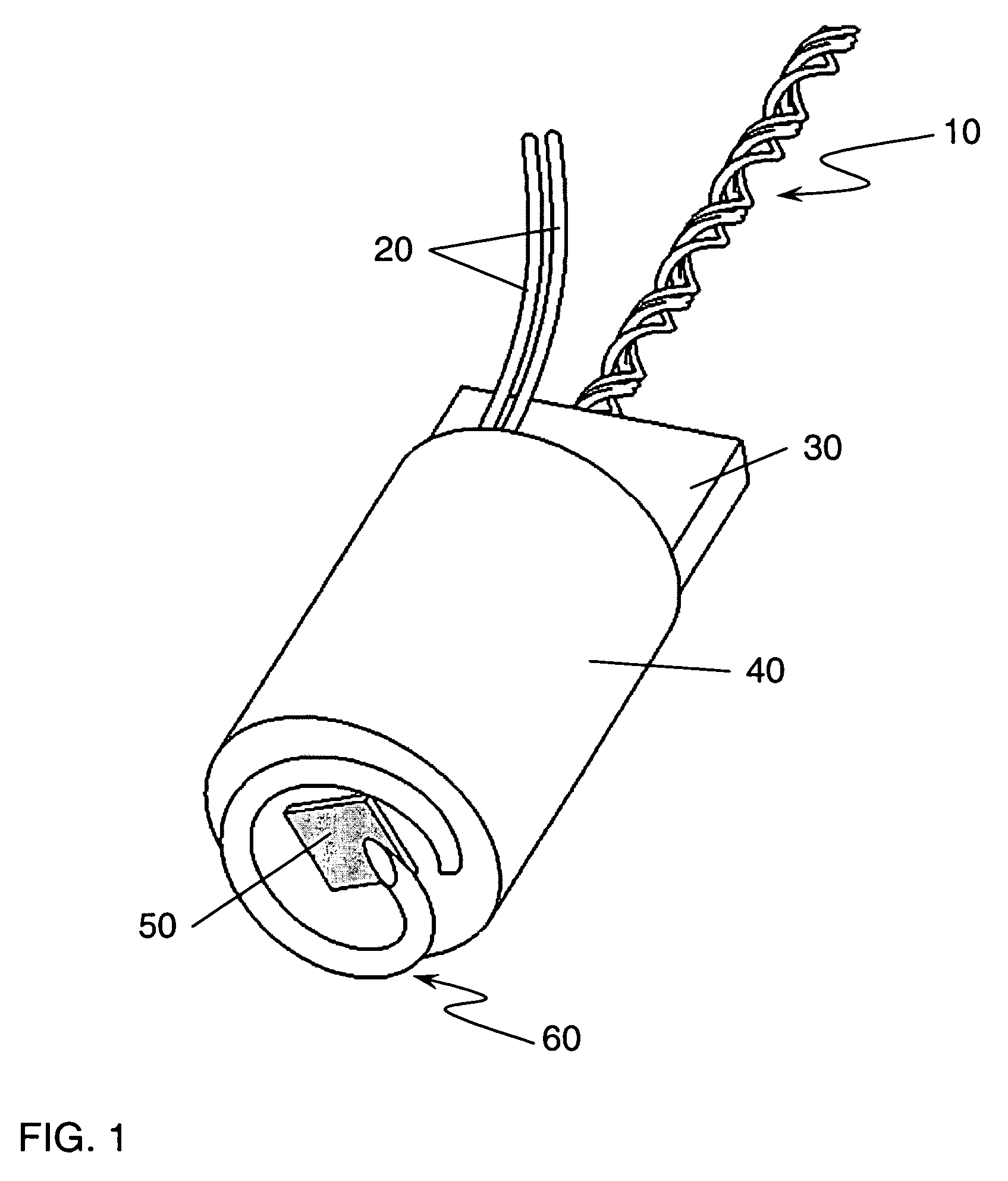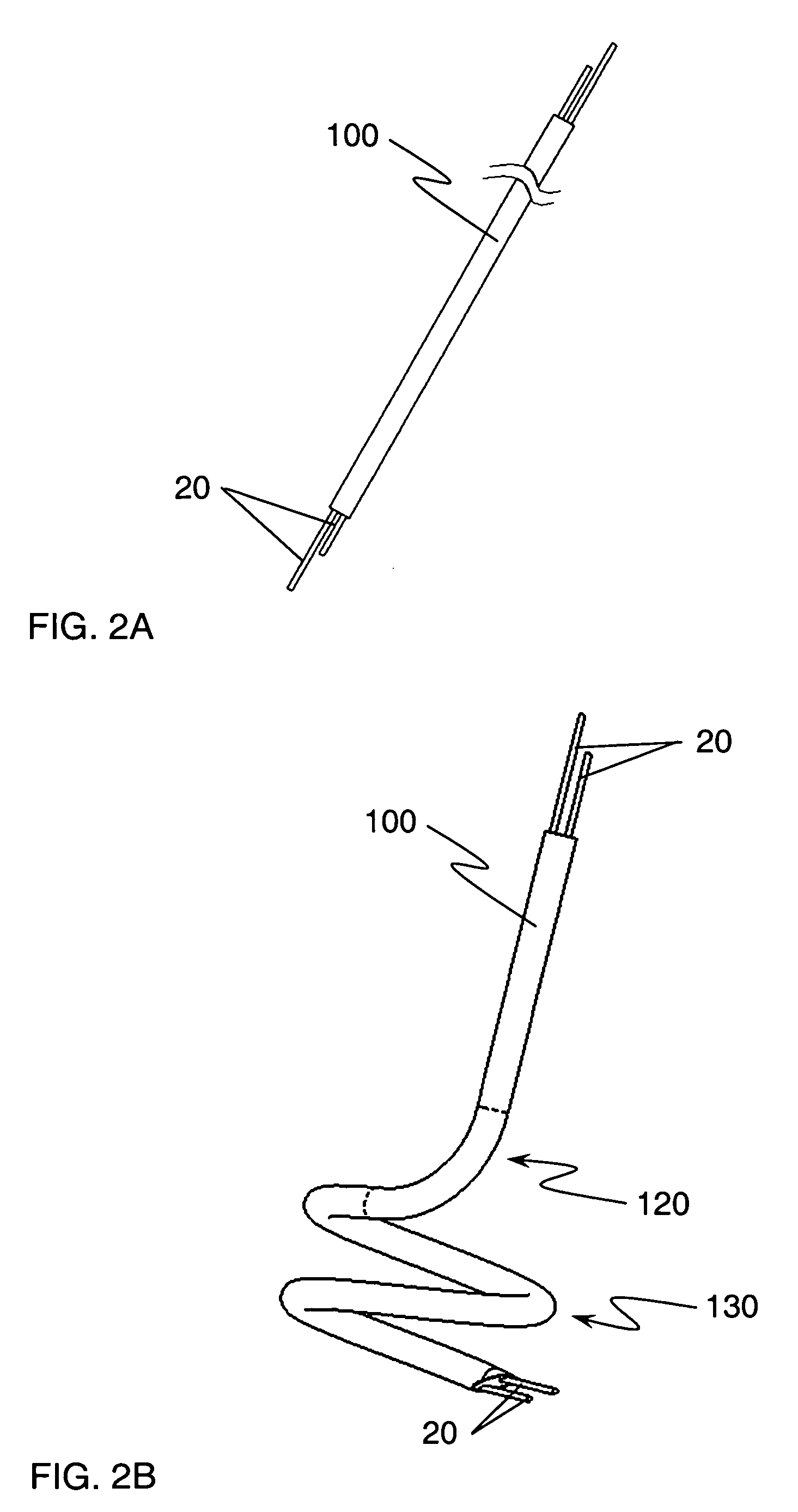Curved needle assembly for subcutaneous light delivery
- Summary
- Abstract
- Description
- Claims
- Application Information
AI Technical Summary
Benefits of technology
Problems solved by technology
Method used
Image
Examples
Embodiment Construction
[0028]Helical needles have been in use for many years for the purpose of monitoring the fetal electrocardiogram (ECG). These devices were referred to as spiral needle electrodes or fetal spiral electrodes. This spiral electrode is a solid needle that is rotated into the fetal scalp. The spiral needle provided one of the electrodes necessary for monitoring the fetal ECG. The “spiral” needle electrode is actually helical in shape. This helically shaped electrode is similar to the one shown as item 60 on the sensor pictured in FIG. 1. In the conventional spiral needle electrode the needle was solid, not hollow, and the distal end was beveled to create a point.
[0029]A complete sensor incorporating the needle assembly of this invention is depicted in FIG. 1. This sensor would allow the monitoring of the fetal ECG in conjunction with the monitoring of fetal arterial oxygen saturation. Such a sensor would consist of both optical and electrical components. The needle assembly 60, of this in...
PUM
 Login to View More
Login to View More Abstract
Description
Claims
Application Information
 Login to View More
Login to View More - R&D
- Intellectual Property
- Life Sciences
- Materials
- Tech Scout
- Unparalleled Data Quality
- Higher Quality Content
- 60% Fewer Hallucinations
Browse by: Latest US Patents, China's latest patents, Technical Efficacy Thesaurus, Application Domain, Technology Topic, Popular Technical Reports.
© 2025 PatSnap. All rights reserved.Legal|Privacy policy|Modern Slavery Act Transparency Statement|Sitemap|About US| Contact US: help@patsnap.com



